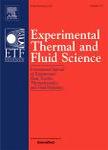版权所有:内蒙古大学图书馆 技术提供:维普资讯• 智图
内蒙古自治区呼和浩特市赛罕区大学西街235号 邮编: 010021

作者机构:Xi An Jiao Tong Univ State Key Lab Multiphase Flow Power Engn Xian 710049 Shaanxi Peoples R China Northwest Inst Nucl Technol State Key Lab Laser Interact Matter Xian 710024 Shaanxi Peoples R China China Aerodynam Res & Dev Ctr Mianyang 621000 Sichuan Peoples R China
出 版 物:《EXPERIMENTAL THERMAL AND FLUID SCIENCE》 (实验热力和流体科学)
年 卷 期:2019年第107卷
页 面:107-117页
核心收录:
学科分类:07[理学] 0807[工学-动力工程及工程热物理] 0802[工学-机械工程] 0702[理学-物理学]
基 金:National Natural Science Foundation of China [51776164, 51706172] Postal Doctoral Foundation of China [2017M613130] State Key Laboratory of Engines, Tianjin University [K2017-03] State Key Laboratory of Laser Interaction with Matter [SKLLIM1508] Japan Society for the Promotion of Science
主 题:Turbulent premixed flame Combustion laser diagnostics Flame front identification Flam front structure High pressure
摘 要:Image processing is of primary importance in the laser diagnostic on turbulent combustion, which can provide quantitative information, such as velocity field, intermediate species profile. Turbulent premixed flame front indicates the flame-turbulence interaction, can be decided from the OH-PLIF (Planar Laser Induced Fluorescence) technique due to the sharp increase of the OH distribution from unburned to burned region. In this paper, an adaptive threshold binarization method was proposed based on the local gray histogram of the OH-PLIF images when the signal-noise ratio is relatively low, i.e. turbulent flames at intensive turbulence and high pressure. The noise was eliminated by seed-mediated growth to obtain the legible flame front. Effect of different flame front identification methods, namely global binarization method, the canny operator of Matlab and the proposed adaptive threshold binarization method, on the flame structure parameters at various conditions was investigated. Results show that the flame fronts are seriously vague using the global binarization and the canny operator when the signal-noise ratio is low at intensive turbulence and high pressure, while continuous flame front can still be attracted by the proposed adaptive threshold binarization method. The turbulent flame front parameters from different methods are almost identical at weak turbulence and atmospheric pressure. While due to the noise introduced, the value of flame brush thickness, flame height and flame surface density from the proposed method is smaller than that of other two methods at high pressure. The adaptive threshold binarization method can obtain a better flame front identification at low signal-noise ratio conditions, results in reasonable premixed turbulent flame front parameters at intensive turbulence and high pressure.